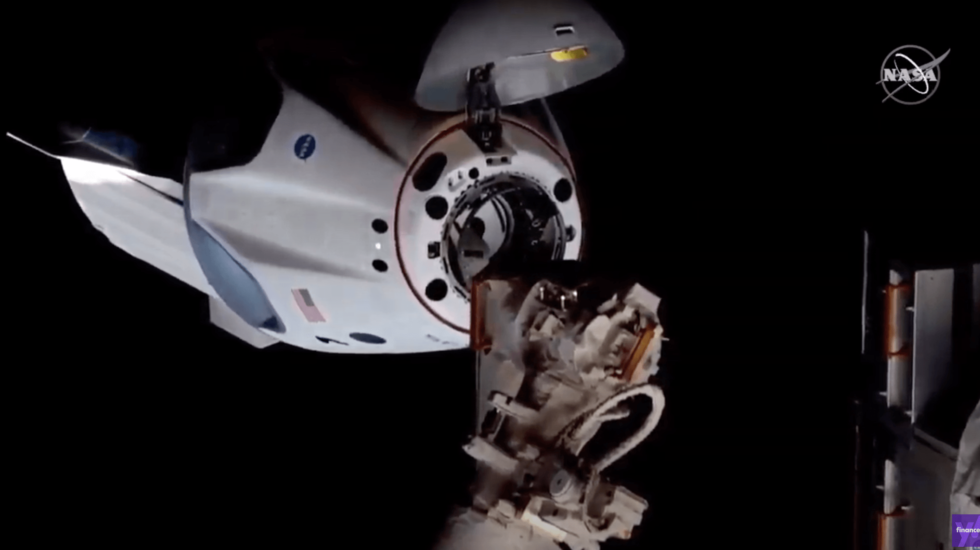After a thundrous liftoff Saturday at Cape Canaveral and a 19-hour chase in orbit, two NASA astronauts docked safely on Sunday morning with the International Space Station.
The final phase of the docking by the SpaceX Crew Dragon capsule was automatic — largely hands-off for veteran astronauts Doug Hurley and Bob Behnken. It was the first manned space mission launched from American soil in nearly a decade and the first ever for a privately built spacecraft.
Before the initial “soft capture” docking at 10:16 a.m. EDT, the two astronauts successfully conducted two manual control tests on the capsule, then let the spacecraft take over the process. It slowly edged into position to dock with ISS; a little over three hours later, the astronauts entered the station, welcomed with hugs by its three crewmembers.
On Saturday, the SpaceX Falcon 9 rocket cleared the tower at the Kennedy Space Center’s Launch Complex 39A at 3:22 P.M. EDT. The astronauts reached orbit in about nine minutes.
The same launch pad was used by the Apollo moon missions more than 50 years ago, as well as more than 130 space shuttle missions.
The reusable Falcon 9 rocket successfully landed on a drone barge in the Atlantic.
In a tweet, NASA declared it “a big day for our country.”
On Saturday evening, after they reached orbit, Hurley and Behnken named their Crew Dragon capsule “Endeavour,” after the retired space shuttle that is now on display at the California Science Center in Los Angeles.
Hurley now occupies a unique place in the history of space exploration: he landed at the Kennedy Space Center aboard space shuttle Atlantis — the last shuttle mission — in 2011. And now he is aboard the ISS, orbiting 267 miles above the earth, on the first-ever crewed Dragon mission.
He and Behnken got their Sunday wake-up call at 4:45 a.m. EDT with the song “Planet Caravan” by Black Sabbath.
After docking, Hurley and Behnken joined NASA astronaut Chris Cassidy and Russian cosmonauts Anatoly Ivanishin and Ivan Vagner aboard ISS.
Hurley and Behnken will remain aboard the station for up to 120 days before returning to Earth for an Apollo-style splashdown landing.
Saturday’s successful launch followed a postponement forced by unsettled weather along the rocket’s flight path over the Atlantic on Wednesday. There was some concern about weather on Saturday, as well, but that dissipated.
The more than 9-year gap between crewed launches from U.S. soil was forced by retirement of the shuttle fleet.
During that time, NASA had to buy space aboard Russian Soyuz spacecraft to reach the space station, at $80 million per seat. Using modern, privately built rockets and crew capsules will be far less costly.
Along with SpaceX, Boeing is contracted to provide both rockets and spacecraft systems.



